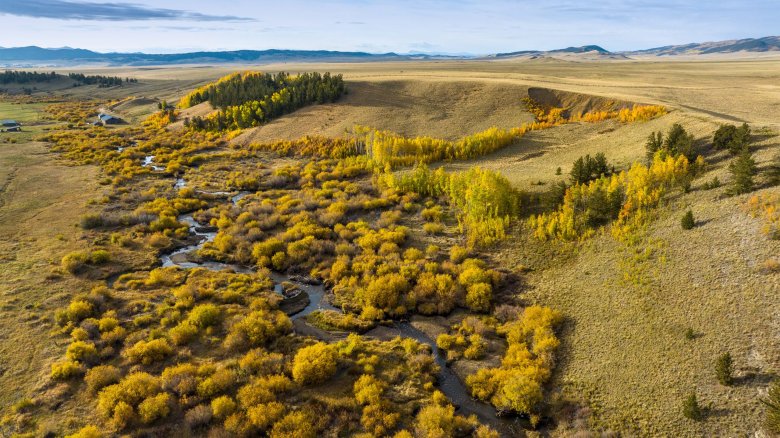Sneak Peek of the Week
Sliver of the Carbondale to Crested Butte Trail approved after years of review with promise of more intense study ahead

1
Number of trails that have been completed among the 16 high-priority trails identified by then-Gov. John Hickenlooper in 2016
For the past decade or so, recreation in Colorado was the solution. Closing mines? How about a national monument? Logging fading? Try trails. Power plants shutting down? Consider a whitewater park.
But as participation in outdoor recreation grows, more land managers and counties are more closely studying not just recreational opportunities but their impacts on wildlife and habitat. As adventuring campers, hikers, paddlers, bikers and skiers push deeper in remote areas, federal, state and local officials are scrutinizing recreational development.
“Land managers like the Forest Service are increasingly recognizing the importance of reducing the ecological impacts of recreation. It’s not an easy task,” said Will Roush, the director of the Wilderness Workshop. “Our land management agencies still have a long way to go regarding crafting policy and implementing management decisions and practices to ensure our decreasing wildlife populations are protected from ever-increasing recreational use and development of public lands.”
In 2023, the Carbondale-based Wilderness Workshop commissioned a study to analyze the ecological impacts of recreation in western Colorado’s wild places as participation in outdoor activities exploded. The study detailed how trails can disturb soil and vegetation in wildlife habitat and suggested new trails should be built only after “thorough consideration of the ecological consequences” and a better management strategy would be to “concentrate use on existing trails.”
The impacts of recreation are becoming more evident in the 2.3 million-acre White River National Forest, where an estimated 17 million annual visitors inject $1.6 billion into rural Western Slope communities, making it the busiest, most economically vibrant national forest in the country.
Roush said the underway update to the 2002 White River National Forest Management Plan is a “once-in-a-generation opportunity” for wild lands and wildlife advocates to work with the Forest Service “to ensure our public lands are not loved to death.”
“The science is clear: The most important piece of that is increasing protections for large, unfragmented landscapes,” Roush said.
The most recent example of the extra study of recreation came in the past couple months as the White River National Forest and Pitkin County approved 7 miles of new trail along an old pass road between Redstone and McClure Pass. The trail is part of the proposed 83-mile Carbondale to Crested Butte Trail, which was part of former Gov. John Hickenlooper’s “Colorado The Beautiful” plan to hasten construction of 16 high priority trails.
Both the approvals from the county and Forest Service said any further approval of new segments of the trail would be weighed with a study of impacts of the entire length along the Crystal River. A new amendment to a 2018 approval of the trail in Pitkin County between Carbondale and the top of McClure Pass said any more approvals for the trail would follow “a comprehensive environmental analysis of the potential direct, indirect, and cumulative impacts and connected actions” of the trail in the Crystal River drainage.
>> Click over to The Sun next week to read this story
Welcome to The Outsider, the outdoors and mountain newsletter from The Colorado Sun. Keep reading for more exclusive news on the industry from the inside out.
If you’re reading this newsletter but not signed up for it, here’s how to get it sent directly to your inbox.
Send feedback and tips to jason@coloradosun.com.

The Outsider now has a podcast! Veteran reporter Jason Blevins covers the industry from the inside out, plus indulges in the fun side of being outdoors in our beautiful state.
Subscribe on Apple Podcasts, Spotify or wherever you listen to podcasts.
The Playground
Limited access at Colorado’s newest state wildlife area is one of several options for pristine landscapes changing hands in Colorado

A coalition of advocacy groups sued Colorado Parks and Wildlife last fall over new rules governing state wildlife areas, arguing the agency was favoring hunters and anglers over other types of users, like hikers and bird watchers.
Hook and bullet access access was the deal a decade ago, when the state’s 350-plus state wildlife areas were supported almost exclusively with revenue generated by hunters and anglers. Now, Colorado Parks and Wildlife has more diverse revenue tools — like the Keep Colorado Wild Pass — that are supported by a much broader contingency than the hook-and-bullet crowd.
That case is ongoing. But the state’s newest state wildlife area — about 1,860 acres of prime elk habitat along 5 miles of the trout-rich Tarryall Creek south of Fairplay — is definitely catering to hunters and anglers. Access to the new Collard Ranch State Wildlife Area will require a hunting or fishing license or a state wildlife areas pass.
The $8.5 million deal involved Colorado Parks and Wildlife, Great Outdoors Colorado and the Western River Conservancy, which bought the land a couple years ago with a plan to sell it to the state for protection.
Access reserved for a limited number of specifically licensed visitors will certainly conserve the former Collard Ranch. This won’t be a state park with big crowds and packed parking lots. And it won’t be a gated, privately owned playground for the wealthy.
There are lots of paths to pursue when pristine parcels change hands, and the plan for Collard Ranch is one of four avenues unfolding right now in Colorado.
There’s Stagecoach, the long closed ski area in southern Routt County where a private developer is planning a private ski and golf resort for the very rich. There’s Fishers Peak, a new state park on the border of Trinidad that promises to support a growing outdoor recreation economy in southern Colorado. Or Sweetwater Lake above the Colorado River in Garfield County, which the Forest Service acquired after years of plans from developers and partnered with the state with plans for a new state park or recreation area. Locals in Sweetwater are irked at the park plan. Folks in Routt County are wary of a gated community with outdoor amenities reserved for members.
There likely will be some grousing in Park County as access to the state’s newest recreation area will be tightly controlled. But maybe the crowd-limiting measures and focus on conservation will help better protect the natural resources in the headwaters of the South Platte River.
“Western Rivers’ motto is ‘Sometimes to save a river, you have to buy it’ and that’s exactly what we did at Collard Ranch,” Allen Law with the Western Rivers Conservancy, told Sun reporter Tracy Ross.
>> Click over to The Sun on Friday to read Tracy’s story
The Guide
Denver is Colorado’s top tourist destination but traveler dollars in mountain towns have an outsized impact


$5.67 billion
Visitor spending in the seven high-country counties that host most of Colorado’s skiers
Colorado is the epicenter of U.S. skiing, accounting for nearly a quarter of the nation’s visits to ski resorts.
But Colorado’s largest tourism draw isn’t skiing. It’s the city of Denver, which harvests more than one-third of tourist dollars spent in the state.
The latest economic impact reports on Colorado’s tourist economy — released this week by the Colorado Tourism Office — show yet another banner year for the state’s bustling tourism industry. The 93.3 million visitors who spent $28.3 billion in the state in 2023 marked an all-time high for Colorado tourist businesses.
Almost half of those traveler dollars were spent in the six-county metro Denver area.
In the city of Denver, spending in 2023 reached an all-time high of $10.1 billion, up from $9.7 billion in 2022. Tourist dollars supported 44,750 jobs in Denver in 2023, up from 41,400 jobs in 2022.
The Colorado Tourism Office-commissioned report by Dean Runyan and Associates breaks down spending in each Colorado county. We crunched some numbers for seven counties with 15 ski areas that account for more than 90% of the state’s annual 14 million skier visits: Eagle, Grand, Gunnison, Routt, Pitkin, San Miguel and Summit counties.
The seven resort-reliant counties saw $5.67 billion in visitor spending in 2023, up from $5 billion in 2022. Tourist dollars supported 41,555 jobs in those counties in 2023, up from 36,790 the previous year.
The visitor spending in Colorado’s mountain towns is much smaller than in Denver, but those visitors have an outsized impact in small communities. In the Mile High City, tourism jobs make up about 6.2% of the city’s population. In the seven resort counties, tourism jobs account for 25% of the population.
>> Click here to read this story
The Project 2025 roadmap for Colorado’s public lands under a Trump administration

163
Number national monuments created or enlarged by presidents using the Antiquities Act since 1906
Colorado is often on the backburner of presidential election campaigning. But Colorado could see changes if Donald Trump wins a second term. While the Trump campaign has been light on details for how a Trump administration might impact Colorado, the 922-page Project 2025 “Mandate for Leadership” presidential transition proposal promises some changes for the state’s public lands under a new administration.
The Project 2025 plan for the Interior Department was penned by William Perry Pendley, an Evergreen-based conservative lawyer who served briefly as the head of the Bureau of Land Management under Trump in 2020.
Perhaps the most impactful proposal in Pendley’s plan is calling for a new president to repeal the Biden administration’s withdrawal of mineral and energy leases on 221,000 acres in the Thompson Divide.
The Project 2025 plan urges the Interior Department to escalate drilling and mining across public lands while scaling back Biden administration protections for wildlife and habitat, which would be a big shift for Colorado.
Pendley, who has consistently advocated for the federal government to sell public lands, said a new administration should work to repeal the Antiquities Act of 1906, which has been used by 18 of the country’s 21 presidents since 1906 to establish or enlarge 163 national monuments.
“As has every Democratic president before him beginning with Jimmy Carter, Joe Biden has abused his authority under the Antiquities Act of 1906,” Pendley wrote, who pointed to Biden’s creation of the Camp Hale-Continental Divide National Monument in 2022 as an example of “the outrageous, unilateral withdrawals from public use of multiple-use federal land.”
“In the days before the 2024 election, Biden will likely designate more western monuments,” Pendley wrote. (River and environmental advocates are urging Biden to use the Antiquities Act to protect more than 390,000 acres of land around the Dolores River as a national monument, which has stirred emotional opposition in rural parts of Mesa and Montrose counties.)
Pendley played a role in the Trump administration’s relocation of the BLM’s headquarters to Grand Junction from Washington, D.C., in 2020. His Project 2025 contribution also urges a reversal of the Biden administration’s plan to move the headquarters back to the nation’s capital.
— j

The Colorado Sun is part of The Trust Project. Read our policies.
Corrections & Clarifications
Notice something wrong? The Colorado Sun has an ethical responsibility to fix all factual errors. Request a correction by emailing corrections@coloradosun.com.

